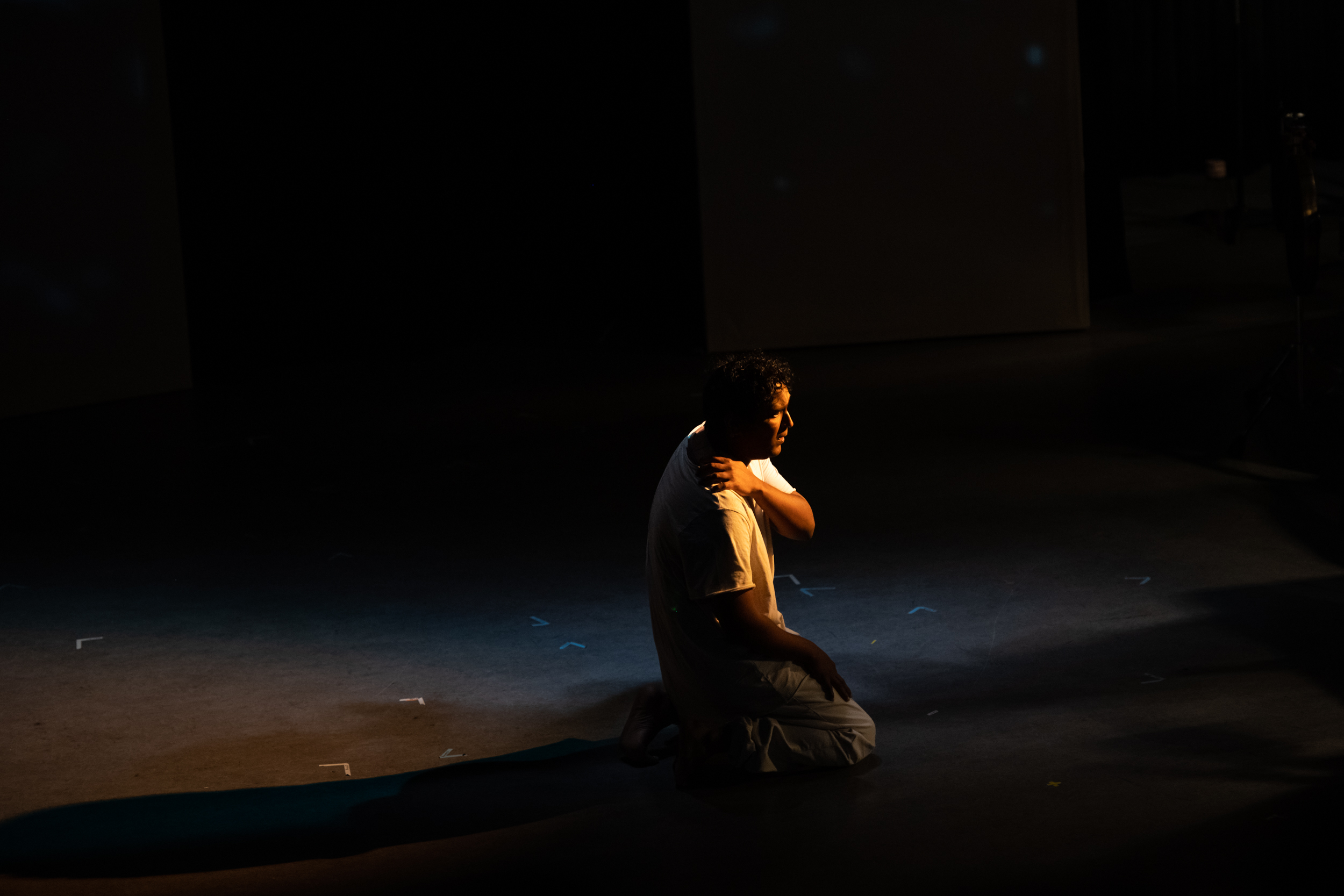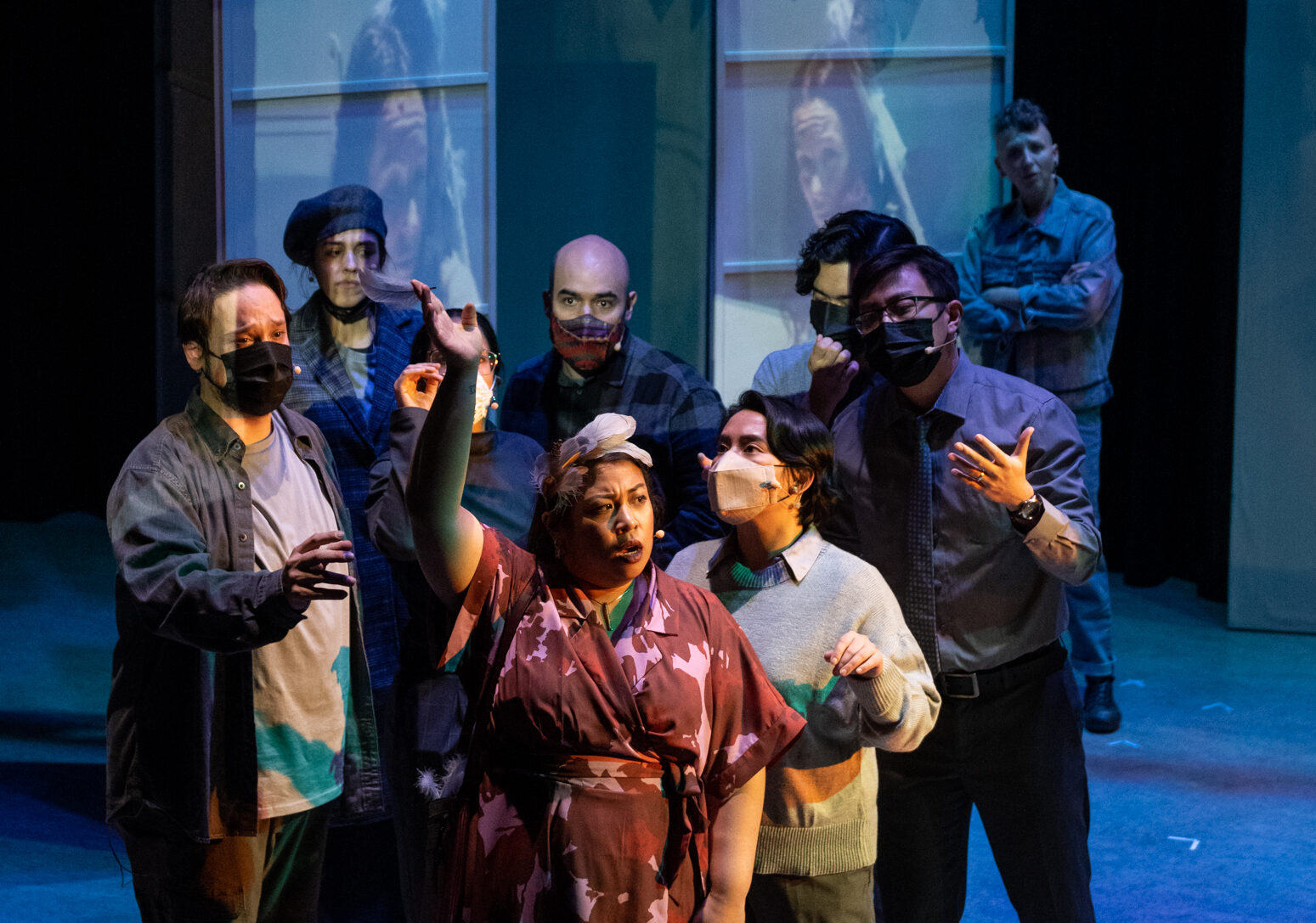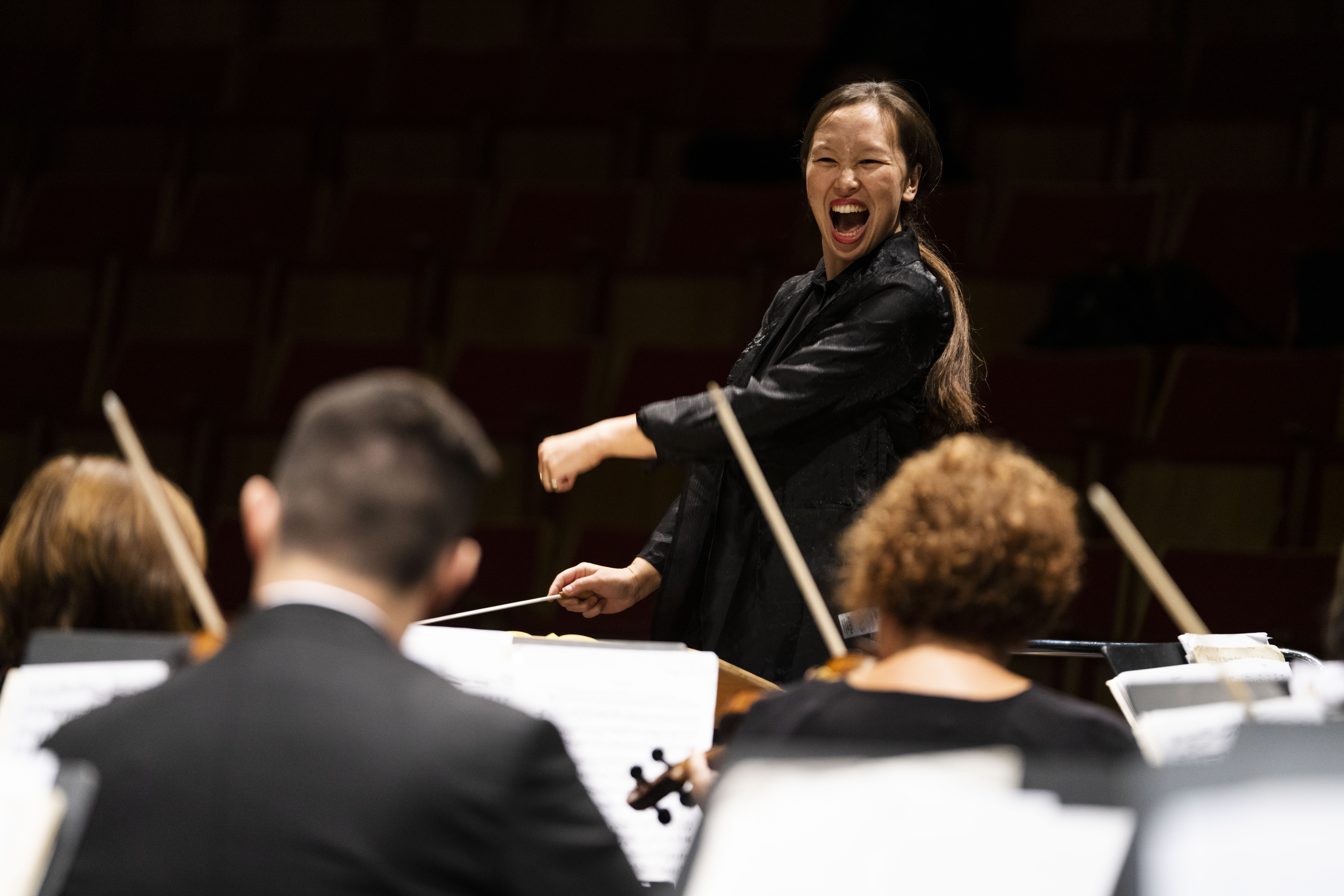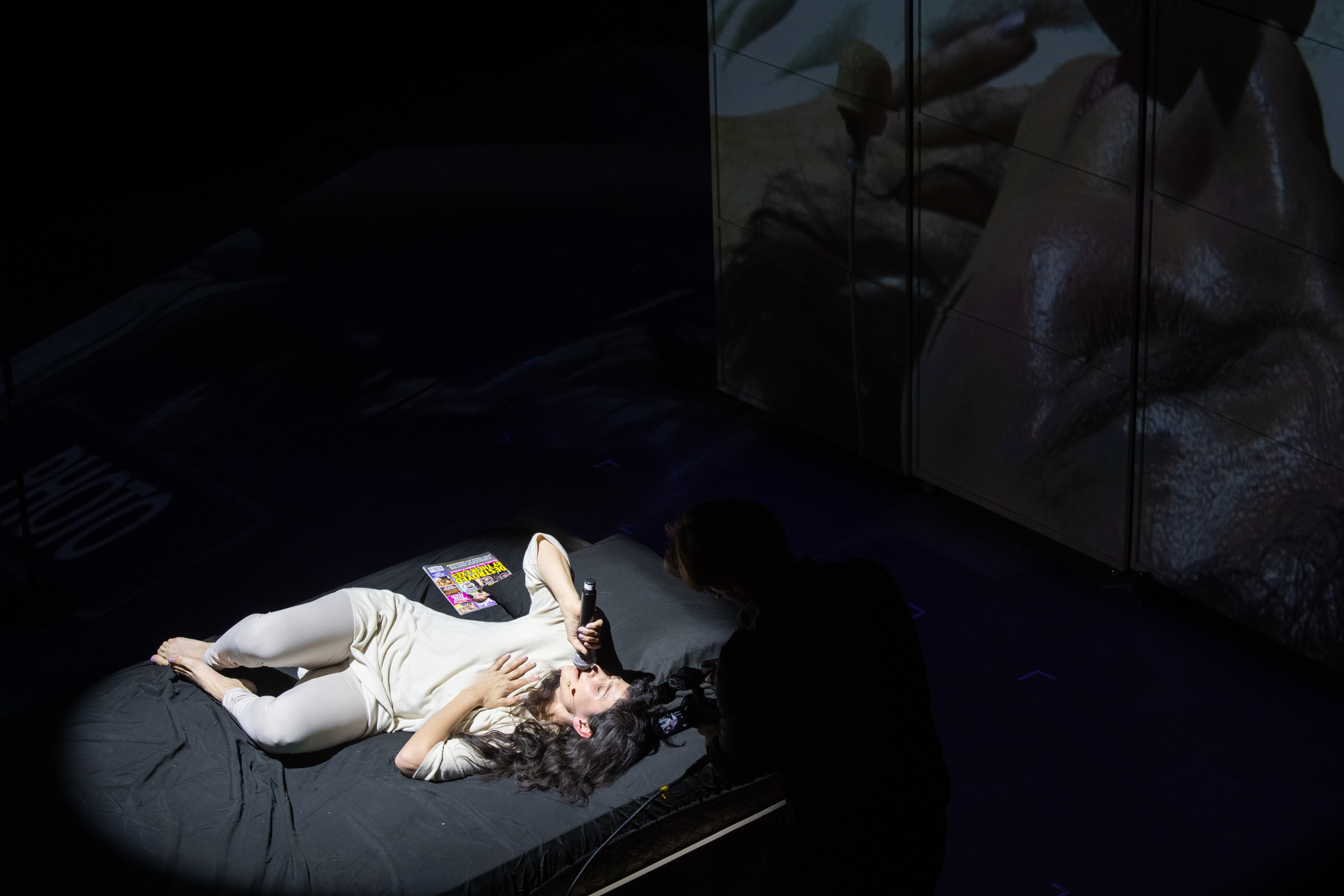
“Angel’s Bone follows the plight of two fallen angels whose nostalgia for earthly delights finds them far from heaven. They are found battered and bruised by a man and his wife, known only as Mr. and Mrs. X.E., who have longed for a better life than their modest middle-class status and bring them into their home and set out to nurse them back to health: they bathe them, wash the dirt from their nails… then lock them in the root cellar and decide that this is their chance to be wealthy and legendary.” [1]
Reading the synopsis for the original 2016 production of the opera Angel’s Bone, one might be forgiven for expecting a dark comedy about how greed can turn ordinary people into mean exploiters. Instead, Canadian librettist Royce Vavrek’s magical realism provides a harrowing allegory for the horrors of sex trafficking, delving in the psyches of two perpetrators and drawing audiences into the processes of dehumanizing. The tone of the story allows Chinese-American composer Du Yun to add a dissonant spin onto a variety of musical genres ranging from renaissance polyphony to cabaret and punk—a technique that won her the 2017 Pulitzer prize in music. Yun believes that classical music audiences are ready for such cutting-edge sounds; [2] however, her approach here seems to acknowledge that dissonant music is more acceptable when it accompanies horrifying imagery. All in all, Angel’s Bone is a well-crafted narrative enhanced by powerful music that highlights the “close-to-home” reality of human trafficking; on these merits alone, it deserves its emerging place in the operatic canon.

The problem with artistic and scholarly canons, as we have started to learn the hard way, is that that they have a history of telling stories that belong to other people—often misrepresenting them in ways that perpetuate historical power imbalances. Amidst the emerging voices of people formerly ignored or silenced, there is a growing consensus that collaborative work offers a partial solution to the problem.
When Debi Wong (founder of re:Naissance Opera and IndieFest) first thought of producing Angel’s Bone in Vancouver, she fostered such a collaborative ethos by establishing a “social context committee” that included survivors of trafficking and support workers. Thanks to the committee, the recent Vancouver production (reviewed below) redirects the focus back to the victims of trafficking and provides (through a printed synopsis) a backstory for the pimps—giving them character motivation as perpetuators of a cycle of abuse. As audience members, we can no longer simply stare in horror at the perpetrators, because at some level, we are also participants in a system that fails the most vulnerable among us. While the opera doesn’t spell this out, examples of this complicity could include normalized behaviors such as the casual consumption of pornography and voting trends that fail to address the root causes of poverty—all things that the feminist activists have been pointing out for decades.
People create art for a variety of reasons, with social commentary being just one possibility. However, for an artistic genre that receives a good percentage of public funding—arguably disproportionate to its reach—one might reasonably expect that opera has a lot to contribute to society. The Vancouver production of Angel’s Bone steps up to this challenge admirably, using nuanced, inclusive storytelling as a creative lens to generate conversation, empathy, and visibility around human trafficking in Canada. This is of course in contrast with mainstream opera productions that continue to profit from the portrayal of outdated stereotypes.
While I applaud initiatives by opera singers to address issues of social justice, I have often wondered if social justice commentary is usefully served by opera. Can a singing style cultivated in the centuries preceding electric amplification clearly convey plot-driving information? (for comparison, the music most closely associated with social commentary today is that produced by hiphop rappers). While I need to see more contemporary opera before I can answer that question, it is noteworthy that the voices of the Angel’s Bone cast were amplified, and that the sung lyrics were clarified by titles. That said, what made the messaging effective was not so much the words as their emotional impetus, embedded in the musical score and expertly brought to life by the actors.

In the Vancouver reinterpretation, the character Mr. X.E. (menacingly played by Alexander Dobson, baritone) is a serial abuser who manipulates his victims through a variety of tactics ranging from gaslighting to violence; his first act of exploitation is to butcher the angels’ wings. According to the reimagined synopsis, his wife Mrs. X.E transitions from being his victim to becoming a perpetrator herself, redirecting the techniques of grooming and love-bombing to their new victims, the two young angels who have crashed into their backyard. Alyssa Samson’s powerful voicing of Mrs. X.E.’s character did well to reveal the psychological trajectory of greed overcoming compassion. However, as one audience member pointed out to me, the printed synopsis that we were given to read (at the time, we didn’t know it had been re-written for this production) couldn’t be easily inferred from the action taking place on stage, making for a somewhat disjointed viewing experience. While the actors cannot be expected to deviate from the official libretto, the production might have benefited from the revised backstory being included on stage, framed as one possible prequel to the story.
If the original story focused on the Mr. and Mrs. X.E., this production made it a point to highlight the victims of trafficking, namely the Boy Angel (played by Asitha Tennekoon, tenor) and the Girl Angel (played by Winona Myles, in the performance I saw). Tennekoon navigated the vocal gymnastics of his role with seeming ease, convincingly modeling a trajectory of trauma responses typical of male trafficking victims with compelling displays of responsibility, fear, rage, and despair. Myles’s submissive reaction to captivity (an apparently typical survival strategy for female-identifying victims) was for the most part played silently, before erupting into a webcam performance of searing punk vocals advertising her character’s brokenness to the highest bidder. Special mention should be made of the ensemble, who in addition to singing the complex score and acting in key roles, also moved set pieces around the stage throughout the performance.

Exemplifying a commitment to non-hierarchical management and creative structures, Angel’s Bone was produced in Vancouver through a collaboration between re:Naissance Opera, Sound the Alarm: Music/Theatre, Loose Tea Theatre, Arraymusic, and Turning Point Ensemble, with input from the Social Context Committee. While there is no one right way to react to a piece like this; I believe the producers might measure the success of their efforts by how much concrete action they can inspire toward addressing the root causes of human trafficking and supporting survivors. I suggest that the next production (scheduled for Spring 2023 in Toronto) will benefit from links to recommended community partners, so that inspired audience members can follow up with donations and other resources.
– Eshantha Peiris
1 https://www.pulitzer.org/winners/du-yun
2 https://www.npr.org/sections/deceptivecadence/2017/04/10/523304153/du-yun-wins-music-pulitzer-for-angels-bone
